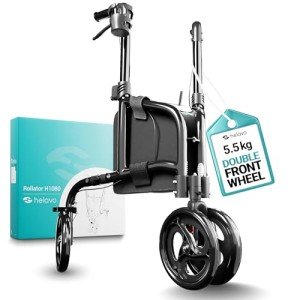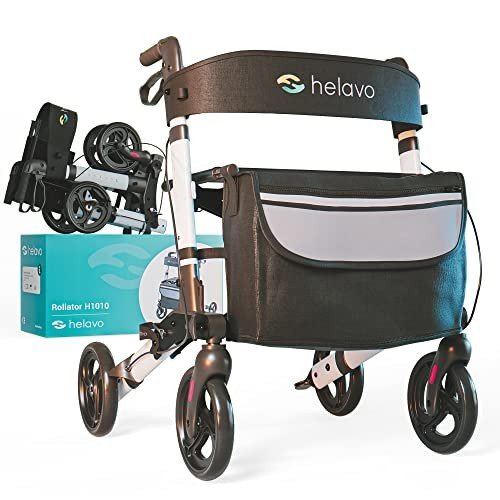rollator-walker7829
rollator-walker7829
The Motive Behind Rollator For Walking Is Everyone’s Obsession In 2024

Understanding Rollators for Walking: A Comprehensive Guide
Rollators are an indispensable mobility aid that improves the freedom and independence of those with limited walking abilities. They are created not just to provide stability and support however also to encourage mobility and engagement in daily activities for people of any ages. This post delves deep into the world of rollators, offering insights into their functions, benefits, types, upkeep, and key considerations when picking the most appropriate model.
What is a Rollator?
A rollator is a mobile walking aid equipped with four wheels, handgrips, a seat, and frequently comes with extra features such as storage baskets and brakes. Unlike traditional walkers, which require the user to raise them off the ground, rollators can be pushed along as the user strolls, making them especially beneficial for people with limited strength or balance.
Key Features of Rollators
Rollators consist of numerous functions that improve their usability:
- Wheels: Most rollators include swivel or fixed wheels for better maneuverability inside your home and outdoors.
- Brakes: Hand brakes allow users to control their speed and stop securely.
- Seat: Many rollators supply an integrated seat for users to rest when needed.
- Lightweight Frame: Constructed from lightweight materials, rollators are easy to raise and carry.
- Adjustable Height: Most rollators permit for height modifications to accommodate the user’s stature.
Benefits of Using a Rollator
Using a rollator uses various advantages, particularly for seniors and people with mobility obstacles. These might consist of:
- Improved Stability: Rollators offer a stable base that assists avoid falls.
- Increased Mobility: Users can move about more easily, whether indoors or outdoors.
- Enhanced Independence: With a rollator, users can perform daily tasks without requiring help.
- Hassle-free Seating: The schedule of a seat enables users to rest whenever they feel tired.
Kinds of Rollators
When thinking about which rollator to pick, it’s essential to acknowledge the different types readily available. The primary categories include:
- Standard Rollators: Typically have 4 wheels and a seat, ideal for most indoor and outdoor environments.
- Sturdy Rollators: Designed for bigger people, these rollators have actually enhanced frames and higher weight capabilities.
- Three-Wheel Rollators: These supply a more lightweight and compact alternative, making them perfect for narrower spaces.
- Foldable Rollators: Convenient for transportation, these designs can be easily collapsed and saved when not in use.
| Type of Rollator | Description | Best For |
|---|---|---|
| Standard Rollator | Four wheels, seat, numerous options. | General use, indoor and outdoor. |
| Durable Rollator | Strengthened for greater weight capability. | Bigger people needing extra support. |
| Three-Wheel Rollator | Compact and lightweight, simple to maneuver. | Limited space and indoor use. |
| Foldable Rollator | Collapsible for easy transport. | Frequent tourists or caregivers. |
How to Choose the Right Rollator
Choosing the right rollator includes thinking about numerous aspects to fulfill the person’s particular requirements:
- Weight Capacity: Ensure the rollator can support the user’s weight.
- Height Adjustability: Look for models that can be adapted to the user’s height for ideal comfort.
- Features Needed: Consider whether additional functions like baskets, trays, or hand brakes are very important.
- Meant Use: Determine if the rollator will be mostly used indoors, outdoors, or both.
Maintenance Tips for Rollators
To lengthen the lifespan and functionality of a rollator, routine upkeep is essential. Here are some useful suggestions:
- Check Brakes: Regularly test brakes to guarantee they engage properly.
- Examine Wheels: Look for signs of wear and tear; wheels should roll smoothly.
- Clean Regularly: Wipe down the frame and components to avoid dirt accumulation.
- Tighten up Bolts: Periodically check and tighten up any loose bolts or screws.
Regularly Asked Questions (FAQs)
1. Can rollators be used on unequal surface areas?
Yes, numerous rollators are created with bigger wheels or specialized treads to handle uneven surface areas. However, users should work out care and ensure they feel steady when browsing such terrains.
2. How do I measure the correct height for a rollator?
When standing directly, the deals with of the rollator ought to align with the user’s wrist when their arms are unwinded at their sides. This position guarantees comfortable use.
3. Do I require a prescription to buy a rollator?
No, rollators can be purchased without a prescription. However, seeking advice from a healthcare expert can be advantageous to recognize the best option based on private requirements.

4. Are rollators covered by insurance coverage?
Protection for rollators can vary based on the kind of insurance strategy. Lots of Medicare strategies offer protection for some kinds of walkers, including rollators. It’s a good idea to consult the insurance supplier directly.
Rollators for Mymobilityscooters walking considerably enhance the lives of lots of individuals facing mobility challenges. Providing stability, self-reliance, and ease of movement, they work as essential tools for preserving an active way of life. Comprehending the various types, functions, and how to keep them in great condition can empower users in making informed decisions. As mobility needs differ considerably from individual to individual, it is vital to select a rollator that best meets private requirements and enhances lifestyle.



